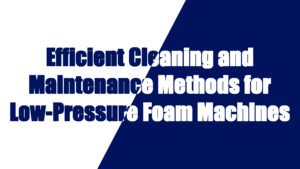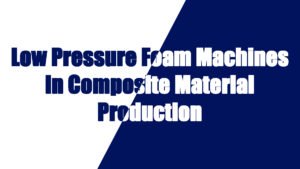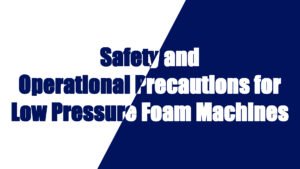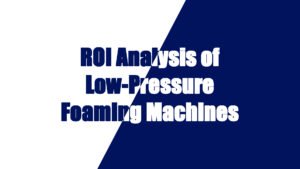The global automotive interior market is a huge industry. With the development of the car upholsetry and changes in consumer demand, the types, quality and functions of interior materials are constantly improving. The market size of automotive interior materials has reached tens of billions of dollars and is expected to continue to grow.
According to market research reports, the global automotive interior materials market will be worth approximately USD 30 billion in 2023, and is expected to reach approximately USD 50 billion by 2030, with an average annual growth rate of 6%-7%. The main markets are concentrated in North America, Europe and Asia Pacific, especially the rapid growth of the Chinese and Indian markets has driven the market expansion in the Asia Pacific region.
Polyurethane foam is one of the common materials in car interiors, mainly used in seats, door linings, dashboards, etc. Polyurethane foam provides good comfort and support, with good elasticity and durability. With the requirements of environmental protection regulations, low VOC (volatile organic compounds) and harmless polyurethane materials have become mainstream. This article will focus on comparing the performance, price, environmental protection, etc. of polyurethane and other materials, and summarize their respective advantages and disadvantages, so that you can better understand the reasons for choosing polyurethane.
Polyurethane vs. Other Materials (Summary Table)
To better understand the advantages of polyurethane (PU) as an automotive interior material, here is a detailed comparison with other common materials like PVC, leather, and ABS plastic, supported by specific data.
Property | Polyurethane | PVC | Leather | ABS Plastic |
Elasticity/Softness | Excellent (Adjustable hardness) | Moderate (Rigid) | Excellent (Natural softness) | Poor (Rigid) |
Durability | High (Abrasion, UV resistance) | Low (Aging, Cracking) | Moderate (Requires maintenance) | Moderate (Prone to cracking) |
Environmental Impact | Excellent (Low VOC, recyclable) | Poor (Toxic during production) | Poor (Animal resource usage) | Poor (Non-degradable) |
Cost | Moderate to high | Low | High (Natural leather) | Low |
Comfort | High (Soft, flexible) | Low (Rigid, hard) | High (Natural softness) | Low (Rigid, plastic) |
1. Polyurethane vs. PVC
Polyurethane and PVC (Polyvinyl Chloride) are both commonly used in automotive interiors, but they have some significant differences in performance.
Durability:
- Polyurethane:Offers superior durability, particularly in environments with wide temperature variations. It is highly resistant to weathering and UV degradation.
- PVC:While more affordable, PVC is more prone to brittleness and degradation when exposed to heat, UV light, and environmental factors over time. It can show signs of aging, fading, and cracking.
Elasticity:
- Polyurethane:Known for its excellent elasticity and flexibility, PU can be tailored to different hardness levels, making it ideal for soft materials like seat cushions, armrests, and dashboards.
- PVC:PVC is stiffer and less elastic, which limits its use primarily to rigid interior components such as plastic panels.
Environmental Impact:
- Polyurethane:Modern PU materials, especially water-based PU, have low VOC emissions, making them more environmentally friendly. PU can also be recycled.
- PVC:PVC has a more harmful environmental impact due to the release of toxic substances during production and disposal, such as chlorine gas and dioxins.
Cost:
- Polyurethane:More expensive than PVC, but the performance advantages in terms of comfort, durability, and environmental impact justify the higher cost.
- PVC:Generally cheaper and used in mass production of low-cost automotive parts, but the quality and comfort are typically lower.
Specific Comparison Data:
- Wear Resistance:Polyurethane’s coefficient of friction ranges from 0.5-0.7, while PVC’s is 0.3-0.5, making PU more durable in high-friction areas.
- UV Resistance:Polyurethane typically has a UV stability rating of UV 5-7, while PVC’s UV stability is weaker, making it more prone to aging and fading when exposed to sunlight.
2. Polyurethane vs. Leather
Leather is a traditional high-end interior material, while polyurethane leather (PU leather) is a modern, cost-effective alternative used in many car interiors.
Comfort and Appearance:
- Polyurethane:PU can mimic the appearance and feel of natural leather with excellent flexibility to adjust softness and texture, providing better comfort. It is ideal for applications like seats and trim.
- Leather:Natural leather offers superior aesthetics and comfort but requires regular maintenance. It is also prone to damage, such as scratches or stains, and aging if not cared for properly.
Durability:
- Polyurethane:Offers better durability, abrasion resistance, and resistance to aging compared to natural leather. It is also more resistant to water and stains.
- Leather:While durable, leather can degrade due to exposure to moisture, UV light, or improper care. Over time, it may develop cracks or lose its luster.
Environmental Impact:
- Polyurethane:Modern PU is more environmentally friendly, especially when produced with low-VOC or water-based processes, and it is recyclable.
- Leather:Leather production involves animal resources, and its processing uses chemicals, which can have significant environmental impacts, such as water consumption and chemical pollution.
Cost:
- Polyurethane:More affordable than genuine leather, while still providing a high-quality appearance and feel suitable for mass-market applications.
- Leather:More expensive, especially premium natural leather, which is typically used in luxury vehicle models.
Specific Comparison Data:
- Tensile Strength:Polyurethane typically has a tensile strength of 25-50 MPa, while high-quality leather has a tensile strength of 10-15 MPa. PU is more resistant to tearing and damage.
- Water Resistance:PU has better water resistance, whereas leather absorbs moisture and can develop mold or deform when exposed to humidity.
3. Polyurethane vs. ABS Plastic
ABS (Acrylonitrile Butadiene Styrene) is a common hard plastic used in automotive interiors, particularly for components like dashboards, consoles, and trim panels.
Flexibility:
- Polyurethane:Offers high flexibility and can be adjusted to various hardness levels, making it suitable for soft components such as seat cushions, door panels, and armrests.
- ABS Plastic:Primarily used for rigid parts, ABS is less flexible and not suitable for applications requiring softness or cushioning.
Impact Resistance:
- Polyurethane:Due to its elasticity, polyurethane is more resilient to impact and can absorb energy, reducing damage.
- ABS Plastic:ABS has good impact resistance but can crack or break when exposed to higher forces, especially at low temperatures.
Cost:
- Polyurethane:More expensive than ABS, making it suitable for high-quality, comfort-focused interior parts.
- ABS Plastic:Less expensive and ideal for hard, rigid components used in large volumes, such as dashboard panels and center consoles.
Specific Comparison Data:
- Tensile Strength:Polyurethane’s tensile strength ranges from 25-50 MPa, while ABS typically has a tensile strength of 40-60 MPa, making ABS more rigid but also more prone to cracking.
- Hardness:Polyurethane hardness can vary widely (Shore A 10-90), allowing flexibility, while ABS typically has a hardness of Shore D 70-100, making it suitable for hard plastic components.
Conclusion
Polyurethane offers a balance of performance, durability, comfort, and environmental friendliness that makes it a highly attractive material for automotive interiors. It excels in areas such as elasticity, wear resistance, and comfort, while being more cost-effective and environmentally sustainable compared to leather and PVC. When compared to ABS, it provides superior flexibility and comfort, making it a versatile choice for soft-touch, high-comfort interior components.
Last Blog: Polyurethane in Car Upholstery Industry



































